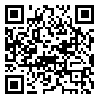Volume 4, Issue 1 (april 2020)
ohhp 2020, 4(1): 38-45 |
Back to browse issues page
Download citation:
BibTeX | RIS | EndNote | Medlars | ProCite | Reference Manager | RefWorks
Send citation to:



BibTeX | RIS | EndNote | Medlars | ProCite | Reference Manager | RefWorks
Send citation to:
Javaherforoush zadeh1 F, gharacheh L. The Relationship between Work Shift and Burnout in Golestan Hospital in Ahvaz. ohhp 2020; 4 (1) :38-45
URL: http://ohhp.ssu.ac.ir/article-1-249-en.html
URL: http://ohhp.ssu.ac.ir/article-1-249-en.html
Ph.D. Student in Health Services Management, Student Research Center, Isfahan University of Medical Sciences, Isfahan, Iran
Abstract: (1576 Views)
Background: The occupational burnout affects the individuals' physical and mental health and is observed in many occupations as a final outcome among nurses. The aim of this study was to investigate the relationship between nurses' work shift and burnout in Golestan Hospital in Ahvaz City.
Methods: This descriptive- analytical study was conducted over all personnel (280 persons) of Golestan Hospital in Ahvaz. The study participants were selected from personnel with at least one year of continuous shift work experience in both shifts as well as day shift groups in 2019.
Results: The prevalence of occupational burnout was 14.3% (40 persons) in the morning shifts and 85.7% (240 persons) in the group who worked in both shifts. Regarding the occupational burnout components, the prevalence rates of emotional exhaustion, depersonalization, and personal accomplishment were 60.7% (n = 170), 78.6% (n =220), and 46.4% (n = 130), respectively. Shift work had a significant with emotional exhaustion (P <0.01) and depersonalization
(P <0.01).
Conclusion: Considering different levels of occupational burnout in nurses, managers of the health system are suggested to analyze the nurses' needs in order to increase the facilities, study the supply and distribution of human resources in the medical departments, and provide the minimum job security for personnel and nurses.
Methods: This descriptive- analytical study was conducted over all personnel (280 persons) of Golestan Hospital in Ahvaz. The study participants were selected from personnel with at least one year of continuous shift work experience in both shifts as well as day shift groups in 2019.
Results: The prevalence of occupational burnout was 14.3% (40 persons) in the morning shifts and 85.7% (240 persons) in the group who worked in both shifts. Regarding the occupational burnout components, the prevalence rates of emotional exhaustion, depersonalization, and personal accomplishment were 60.7% (n = 170), 78.6% (n =220), and 46.4% (n = 130), respectively. Shift work had a significant with emotional exhaustion (P <0.01) and depersonalization
(P <0.01).
Conclusion: Considering different levels of occupational burnout in nurses, managers of the health system are suggested to analyze the nurses' needs in order to increase the facilities, study the supply and distribution of human resources in the medical departments, and provide the minimum job security for personnel and nurses.
Type of Study: Applicable |
Subject:
HSE
Received: 2019/10/20 | Accepted: 2020/02/27 | Published: 2020/04/29
Received: 2019/10/20 | Accepted: 2020/02/27 | Published: 2020/04/29
Send email to the article author
| Rights and permissions | |
 |
This work is licensed under a Creative Commons Attribution-NonCommercial 4.0 International License. |





